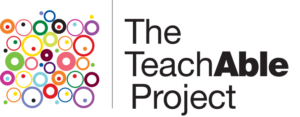Navigation
Previous
Assistive Technology
Next
Teaching Terminology and Strategies Referenced in the Lessons
Glossary
- ABCD (Action Based Community Development)
Building on the skills of local residents, the power of local associations, and the supportive functions of local institutions, asset-based community development draws upon existing community strengths to build stronger, more sustainable communities for the future. - Ableism
Ableism is the tendency to view people with disabilities as less worthy. Ableism may be evident in organizational and institutional structures, polices, procedures, and programs, as well as is the attitudes and behaviours of individuals. - Accessibility
Accessibility is a general term used to describe the degree to which a product, device, service, or environment is available to as many people as possible. Accessibility can be viewed as the “ability to access” and benefit from some system or entity. Accessibility is often used to focus on people with disabilities or special needs and their right of access to entities, often through use of assistive technology. - Advocacy
The act or process of championing or supporting a cause or proposal. - Barrier
Anything, visible or invisible, that keeps someone from fully participating in all aspects of society. There are attitudinal, architectural or structural, technological, or systemic barriers, as well as barriers involving access to information or communication. - Big Ideas
Declarative statements that describe concepts that transcend grade levels. Big Ideas are essential to provide focus on specific content for all students. - Disability
Who is a person with a disability? The definition of disability under the AODA is the same as the definition of disability in the Ontario Human Rights Code. This is the definition of disability that applies to the customer service standard. AODA Section 2. In this Act, … “disability” means,- any degree of physical disability, infirmity, malformation or disfigurement that is caused by bodily injury, birth defect or illness and, without limiting the generality of the foregoing, includes diabetes mellitus, epilepsy, a brain injury, any degree of paralysis, amputation, lack of physical co-ordination, blindness or visual impediment, deafness or hearing impediment, muteness or speech impediment, or physical reliance on a guide dog or other animal or on a wheelchair or other remedial appliance or device,
- a condition of mental impairment or a developmental disability,
- a learning disability, or a dysfunction in one or more of the processes involved in understanding or using symbols or spoken language,
- a mental disorder, or
- an injury or disability for which benefits were claimed or received under the insurance plan established under the Workplace Safety and Insurance Act, 1997;
The definition includes disabilities of different severity, visible as well as non-visible disabilities, and disabilities the effects of which may come and go.
Example: A person with arthritis has a disability that over time may increase in severity.
Example: A person with a brain injury has a disability that is not visible.
Example: A person with multiple sclerosis has a disability that causes her to experience periods when the condition does not have an effect on her daily routine and other periods when it does.
It is important to understand that information about a disability is personal and private and must be treated confidentially. In most cases it will not be necessary to ask for proof of a disability. Through implementing the customer service standard, accessibility will simply become part of everyday service delivery. Some providers such as schools, colleges and universities may require proof of disability because of the type of services that they provide. In such cases, these providers may be subject to privacy-related laws with respect to that information.
- Equity
A condition or state of fair, inclusive, and respectful treatment of all people. Equity does not mean treating people the same without regard for individual differences. - Inclusive Education
Education based on the principles of acceptance and inclusion of all students. Students see themselves reflected in their curriculum, their physical surroundings, and the broader environment, in which diversity is honoured and all individuals are respected. - Mobility Impairment
As defined by Industry Canada, is any reduced function of legs and feet that leads to people depending on a wheelchair or other artificial aid to walking. In addition to people who are born with a disability, this group includes a large number of people whose mobility impairment is caused by age or accidents. - PATH (Planning Alternative Tomorrows with Hope)
PATH is a creative planning tool which starts in the future and works backwards to an outcome of first (beginning) steps that are possible and positive. It is excellent for team building. It has been used to mediate conflicts. It is loved by people who actually want to change the ways we currently work. Groups teaching PATH as a tool will hopefully have a copy for each student. PATH is not for the faint of heart. It is very results oriented. - Self-Advocacy
An individual’s ability to effectively communicate, convey, negotiate or assert his or her own interests, desires, needs, and rights. It involves making informed decisions and taking responsibility for those decisions. (VanReusen etal., 1994). - Synesthesia
Synesthesia is a neurological condition in which two or more bodily senses are merged so that the detection of each is mismatched. General features of synesthetic experience include:- Synesthesia is involuntary and automatic.
- Synesthetic images are spatially extended, meaning they often have a definite ‘location’.
- Synesthetic percepts are consistent and generic (i.e. simple rather than imagistic).
- Synesthesia is highly memorable.
- Synesthesia is laden with affect.
See Amber Jensen: Synesthesia. Lethbridge Undergraduate Research Journal. 2007. Volume 2 Number 1.
